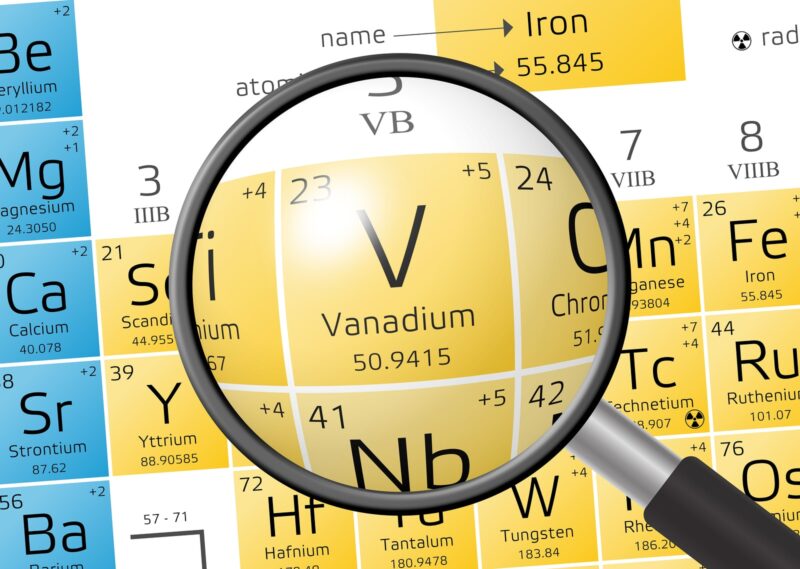Vanadium pentaoxide is a chemical compound present in the formula V2O5. The compound is available in orange color in its pure state. Still, with impurities added, the color can change from yellow to black, considering the type and quantity of impurities present.
When you heat vanadium, it loses oxygen. And because of this ability, it catalyzes various useful aerobic oxidation reactions- the biggest being the production of sulfuric acid through sulfur dioxide.
Production
Commercially, vanadium is manufactured by reacting vanadium tri-chloride with magnesium, sometimes a combination of sodium and magnesium, or using the calcium reduction process of V2O5 in a pressure vessel.
Health consideration
Vanadium is dangerous and should be handled with care and caution.
Major properties
Pure vanadium is:
- Red in color
- Soft
- Has decent structural strength
- Highly ductile
- Contains a low fission neutron cross-section
- Has good resistance to corrosion against HCK acid, sulfuric acid, salt water, and alkalis.
- Oxidizes at a temperature of more than 660 degrees Celsius
Applications
One of the essential uses of vanadium is to work as an additive for steel, with around 80% of vanadium entering the ferrovanadium. It is helpful in manufacturing rust-resistant, spring, and steel tools. It is also included in steels to stabilize carbides.
Vanadium foil helps to bind titanium to steel. Because of its limited fission neutron cross-section, vanadium is also applicable for nuclear uses.
Vanadium pentaoxide is also used in many other applications like:
- It works like a catalyst in the ceramic sector.
- It works like a mordent for printing and dyeing fabrics
- It helps in the production of aniline black.
Production of sulfuric acid
A major use of vanadium oxide is the production of sulfuric acid. Using the contact process, it catalyzes the exothermic sulfur oxide oxidation to sulfur trioxide.
2 SO2 + O2 – 2 SO3
The process allows sulfuric acid to become a cheap chemical today. The reaction is done between 400 to 620 degrees Celsius, and vanadium oxide is inactive as a catalyst. Once it goes above 620 degrees Celsius, it starts breaking.
It also functions as a catalyst in power plants’ NOx emissions catalytic reduction. Because it offers good conversion of sulfur dioxide to sulfur trioxide, more caution should be taken about the temperatures.
Other oxidations
Vanadium oxide is also helpful for the catalytic reaction to product maleic anhydride. It is further used for the production of polyester resins and plasticizers.
Vanadium oxide is also used to produce ferrovanadium. The oxide is heated with aluminum and scrap iron to produce iron vanadium and alumina.
Because of its huge thermal coefficient of resistance, it is also used as a detector compound in microbolometers and bolometers.
Preparation of vanadium oxide
Vanadium oxide is the major compound when the metal vanadium is heated with too much oxygen, but the product can have impurities like other lower oxides. If you need a satisfactory preparation result, it includes the decomposition process of ammonium meta-vanadate at 200 degrees Celsius
2 NH4VO3 → V2O5(s) + 2 NH3 + H2O
